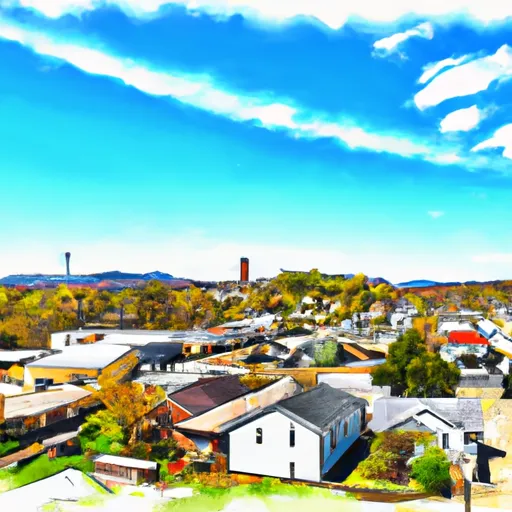-
 Snoflo Premium
Snoflo Premium
Get unlimited access to all our content
With no Ad interruptions! - Start Your Free Trial Login with existing account
Wildersville
Eden Index
Climate
7.8
•
Recreation
2.5
•
Community
0.7
•
Safeguard
4.1/10

Wildersville, Tennessee is a small town located in Henderson County. This charming community offers a pleasant climate, characterized by hot summers and mild winters. Summers in Wildersville are typically hot with average temperatures ranging from the high 80s to mid-90s Fahrenheit, while winters are generally mild with temperatures fluctuating between the mid-30s and mid-50s Fahrenheit.
The town is surrounded by beautiful natural landscapes, including the scenic Beech River. The river serves as a prominent hydrological feature, offering residents and visitors opportunities for outdoor recreation such as fishing, boating, and kayaking. The Beech River is home to various species of fish, including bass and catfish, providing anglers with ample fishing opportunities.
Furthermore, Wildersville is in close proximity to the Tennessee National Wildlife Refuge, where nature enthusiasts can explore the diverse flora and fauna of the region. The refuge offers activities like birdwatching, hiking, and wildlife photography.
Overall, Wildersville, Tennessee, presents a favorable climate for outdoor activities, making it an excellent destination for those seeking natural beauty and recreational opportunities.
What is the Eden Index?
The Snoflo Eden Index serves as a comprehensive rating system for regions, evaluating their desirability through a holistic assessment of climate health, outdoor recreation opportunities, and natural disaster risk, acknowledging the profound impact of these factors on livability and well-being.
Climate Health Indicator (CHI): 7.8
Wildersville receives approximately
1346mm of rain per year,
with humidity levels near 84%
and air temperatures averaging around
15°C.
Wildersville has a plant hardyness factor of
7, meaning
plants and agriculture in this region tend to thrive during the non-winter months.
By considering the ideal temperature range, reliable water supplies, clean air, and stable seasonal rain or snowpacks, the Climate Health Indicator (CHI) underscores the significance of a healthy climate as the foundation for quality living.
A healthy climate is paramount for ensuring a high quality of life and livability in a region, fostering both physical well-being and environmental harmony. This can be characterized by ideal temperatures, reliable access to water supplies, clean air, and consistent seasonal rain or snowpacks.
Weather Forecast
Streamflow Conditions
Lower Tennessee
Area Rivers
Lower Tennessee
Snowpack Depths
Lower Tennessee
Reservoir Storage Capacity
Lower Tennessee
Groundwater Levels
Recreational Opportunity Index (ROI): 2.5
The Recreational Opportunity Index (ROI) recognizes the value of outdoor recreational options, such as parks, hiking trails, camping sites, and fishing spots, while acknowledging that climate plays a pivotal role in ensuring the comfort and consistency of these experiences.
Access to outdoor recreational opportunities, encompassing activities such as parks, hiking, camping, and fishing, is crucial for overall well-being, and the climate plays a pivotal role in enabling and enhancing these experiences, ensuring that individuals can engage in nature-based activities comfortably and consistently.
Camping Areas
| Campground | Campsites | Reservations | Toilets | Showers | Elevation |
|---|---|---|---|---|---|
| Cochrane | None | 166 ft | |||
| Sumter Rec Area | None | 128 ft | |||
| Lakeview RV City Park | None | 230 ft | |||
| Bladon Springs State Park | 10 | 193 ft | |||
| Lake Tom Bailey | 32 | 299 ft | |||
| Natchez Trace State Park | 50 | 637 ft | |||
| Lenoir Landing - Coffeeville Lake | None | 52 ft | |||
| Charley Brown City Park | None | 487 ft | |||
| Service | 32 | 123 ft | |||
| Citronelle Lakeview RV Park | 24 | 226 ft |
Nearby Ski Areas
Catastrophe Safeguard Index (CSI):
The Catastrophe Safeguard Index (CSI) recognizes that natural disaster risk, encompassing floods, fires, hurricanes, and tornadoes, can drastically affect safety and the overall appeal of an area.
The level of natural disaster risk in a region significantly affects safety and the overall livability, with climate change amplifying these risks by potentially increasing the frequency and intensity of events like floods, fires, hurricanes, and tornadoes, thereby posing substantial challenges to community resilience and well-being.
Community Resilience Indicator (CRI): 0.7
The Community Resilience Indicator (CRI) recognizes that education, healthcare, and socioeconomics are crucial to the well-being of a region. The CRI acknowledges the profound impact of these elements on residents' overall quality of life. By evaluating educational resources, healthcare accessibility, and economic inclusivity, the index captures the essential aspects that contribute to a thriving community, fostering resident satisfaction, equity, and social cohesion.

